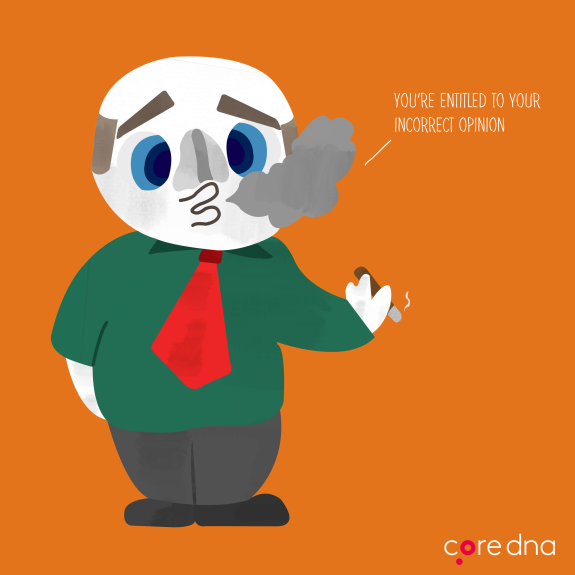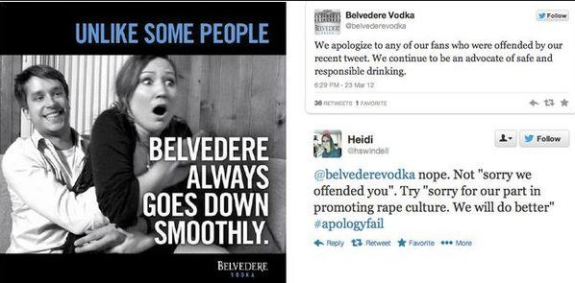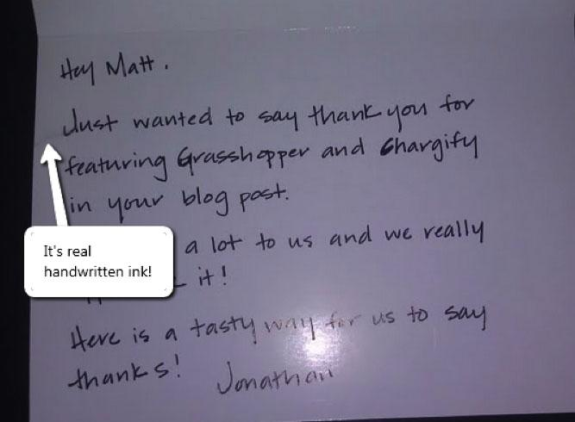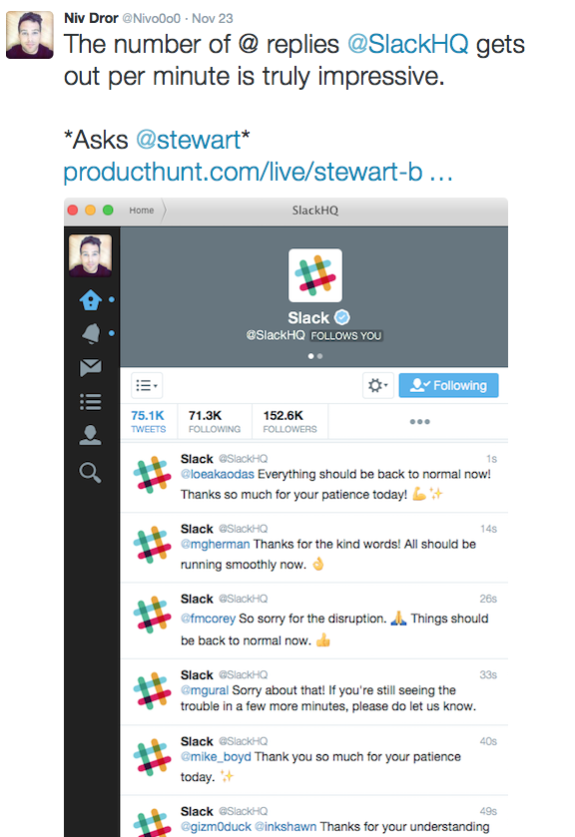The Anatomy of an Internet Troll (And How To Turn Negative Feedback Into Positive)

Social media enables audience participation from far and wide.
Philosophically, that’s a great thing for our democracy.
Historically, business has taken advantage of closed communication systems where they can easily control the message, squashing any potential backlash before it gathers momentum and threatens to erupt.
That control no longer exists. Consumers can know plenty about a business with a few keystrokes.
Publicly available, negative customer feedback is an inevitable part of doing business in the 21st century. But the good news is that there are plenty of positives to be taken from negative feedback.
We’ll examine a few examples later on. But first, you’ll need to avoid the dreaded trolls.
On this page:
The Rise of the Internet Troll
Trolling has firmly wedged itself into our culture. The notion now as common to our collective consciousness as people bumping into one another on the sidewalk whilst browsing Facebook on a mobile device.
Trolls are not merely a humorous part of our zeitgeist and do pose a few problems for consideration. The first is that you can’t actually do much about them. Their behavior is largely out of your control, despite how normal, rational people might feel about what they’re saying.
Rational is an operative word here. You can’t actually rationalize with them. So there’s no point trying to win them over, turn their frown upside down, or make them come to grips with their insanity.
Consider the following guide to your Trolling Personas:
Internet Troll #1: Spelling-Bee Champ

You finally put the finishing touches on your 3,000-word magnum opus, hitting Publish and passing a sigh of relief for all the blood, sweat, and tears you’ve invested.
Not two minutes later there’s a comment.
Belated, a rush of adrenaline spikes with the excitement to see if others have finally realized your brilliance. Maybe even an influence-building comment from a giant of the Twittersphere?!
Eagerly, you click in anticipation of the praise and adulation coming your way.
Annnnnddddd it’s just someone telling you an apostrophe was used incorrectly in line 18.
Thanks. For missing the point entirely.
This troll sometimes also displays an inflated self-esteem (with a healthy dose of narcissism); being the undisputed expert that improves their self-worth each time they point out all the mistakes of others.
Kinda like the ‘leveling up’ that this next group is used to.
Internet Troll #2: Angry, Unemployed Teenager

The deepest, darkest place on the internet, where the most inappropriate and inhumane come to congregate isn’t the Dark Web. It’s the comments section of any single YouTube video.
There is no better place to witness misguided, white-hot anger, combined with sheer stupidity bubbling at its most venomous boiling point.
The haters gonna hate, as one wise sage put it. Quickly taking anything constructive you put forth and transforming it into an attack on a religious group, political party, and eventually, somebody’s mother.
The only reprieve from this insidious troll is when the latest version of Halo is released. This usually provides a brief respite when Troll B spends many uninterrupted hours mutilating other Angry, Unemployed Teenagers in cramped, smelly rooms.
They boast the same unnerving confidence as our Spelling Bee Champs (Troll A), defiantly wreaking havoc across the interwebs at night.
Which is strange, considering the fact that by day, they’re probably lounging around mommy and daddy’s home waiting obediently for their next handout.
Internet Troll #3: The Politico

If you hadn’t heard, there’s an election coming up in the U.S.A.
However, the only thing more annoying than negative campaign commercials or inane, meaningless sound bites repeated ad nauseam on TV, is your Facebook friend who won’t shut up about their candidate of choice.
Whether your preferred candidate takes the prize or not, the one thing you’re guaranteed is that you’ll be completely relieved when someone – anyone – wins so we can all move on.
The Politico Troll will dominate your news feed with the latest random facts and statistics from the latest random poll.
And while this troll’s incessant persistence is both infuriating and commendable, it’s not even the worst part.
No, the worst part is that Troll C believes – without a shadow of a doubt – that they’re right and will definitely sway public opinion with their obviously biased propaganda spoon fed from their equally biased and obscure blog of choice.
Internet Troll #4: Placard Holding Crazy Person

I don’t go to the post office very often. Mainly, because I’m not a retiree.
But one bright and sunny summer day I was forced to mail something to a government entity to avoid additional fees, penalties, and cavity searches. (They don’t really do that last one, do they?!)
Whilst standing disorientated at the entrance of this quaint and unusual venue, I stumbled upon what initially looked like a nice family man by the entrance with a sign. Puzzled, I walked closer so that my nearing-middle-aged eyes could make out what it said.
The TL;DR version likened Obama to Hitler.
Which, regardless of your political preferences, you probably can admit, is stretching things a bit.
And as you’ll see later, you can’t fight crazy with crazy.
Why this person would waste a perfectly sunny day spewing vitriol to people who are already under enough pressure trying to navigate the already maddening Den of Inefficiency known as the Post Office is beyond me.
Internet Troll #5: Chicken Little

No matter what you say, people will take offense.
Somehow, somewhere they band together online (pinpointing exactly where is one of the great mysteries of the internet), get petitions signed and cause a ruckus until somebody issues a formal statement in response.
It’s not so much that they’re haters, but more that they take everything personally. Everyone’s out to get them. And they are an organizer, a rabble rouser. Someone who likes to fight for a cause. And someone, somewhere, owes them an apology for the injustices experience in their life.
The sky then is always, metaphorically falling.
The only thing that will stop it is a well-worded apology (and possibly someone getting fired).
This is just a small sliver of crazy you’re bound to experience while working directly with people online.
Thankfully, these people are also typically the minority.
In fact, many times the negative feedback you experience online will probably be a good thing.
Here’s why.
Why Not All Negative Feedback is Inherently Bad
Most (rational) customer complaints happen as the result of something being broken.
For example, a system error that’s gone unnoticed. A one-time glitch that’s hard to prevent. A tool that malfunctioned. Or maybe an employee is simply having a bad day.
Whatever the cause, negative feedback typically helps us spot things that we either didn’t see coming, or didn’t consider, and (should) help us to rectify it in the future. Instead of fighting it, we should embrace it as a way to learn and improve.
Many of these examples have been fueled by personal experience, working directly with a company that used to receive around 60 customer complaints across Facebook and Twitter in any given month.
(This company had multiple locations across the U.S., so the actual rate of complaints wasn’t very high. But it was still a substantial number to deal with on a daily basis, averaging at least two a day.)
So here’s what you should do the next time you get negative online feedback.
How to handle negative feedback - Step #1: Don’t Hide from Criticism
The first step is always acceptance.
Like it or not, customer power (and their ability to blast your Facebook page) is a reality.
Removing those comments or trying to hide them can only make a tense situation worse.
Just ask Volkswagen, who reportedly tried to delete bad comments in an effort to save face, and only received additional backlash.
The trick isn’t to hide from it, but to respond accordingly.
Note: You absolutely can and should hide public comments that breach decency guidelines against foul or abusive language. We’re talking hate speech and anything that vilifies or denigrates people on the grounds of color, religion, gender, sexual preference and so on. Have those rules in place and visible for all to see and when you do remove those comments, simply point to the rule that is being breached to explain the need to censor their right to “free speech”.
How to handle negative feedback - Step #2: Address it ASAP
Our modern need for instant gratification is particularly stark on social media, where according to AdWeek, 42% of consumers believe they should get a response within 60 minutes and over ⅔ expect a same-day reply.

Left unchecked, negative comments can encourage a ‘mob mentality’ when people begin complaining about the same problems; piling on top of each other until it threatens to spill out of control.
Typically, this means you need (a) available labor and (b) systems to monitor and react in real-time. We’ll look at how a little later.
How to handle negative feedback - Step #3: Respond Publicly, But Go Private ASAP
Public complaints required public responses.
However, as soon as possible, take the conversation private by getting in touch with the disgruntled customer via email or private messaging in that social medium.
This does two things.
First, it helps you get control of the situation and assure the individual that you want to help them ASAP (which, as we’ve learned, they expect). It hopefully circumvents any other possible public negativity about the same issue.
The second is to show everyone else who might see this complaint that despite the occasional hiccup, your company is on top of things and won’t rest until the matter is solved.
How to handle negative feedback - Step #4: Empathy and Sincerity Above All Else
It’s important that whoever is manning the social media frontline actually cares about customers. (Shocking, right?)
But it’s a tricky balance to remain empathetic and sincere in the face of adversity.
Consider what happened to Belvedere Vodka.
Instead of issuing an honest and heartfelt apology when they screwed up, they tried to go the corporate PR-speak route. And it didn’t end well.

How to handle negative feedback - Step #5: Stay in Constant Contact
After the initial problem, communicate proactively with the offended party.
That means going the extra mile in providing hourly updates if possible – even if you have no news yet – to show them that you do, in fact, care.
The lack of a tangible solution isn’t what sets people off the most. Being ignored or swept under the rug does most of the time.
Actively working to find a solution and continuing to remind them that they matter to you (as a person) and your company can earn you a second chance.
How to Turn Negativity into Positive Business Outcomes
If you’ve followed the above steps correctly, it’s not uncommon to see a complainant return to their original complaint thread and deliver a public thank you for addressing their concerns. Or even better, they feel so listened to by your efforts in addressing their complaint, that they start advocating for your brand in conversation with friends and family.
You have then reached the holy grail of dealing with negative feedback. You have managed to turn it into a positive experience all around. Here are some tips to make that happen.
Turning Negative into Positive Tip #1: Incentivize Good Behavior
Getting mad packs a surprisingly powerful psychological punch.
It’s one of the reasons people are more inclined to complain on your Facebook page than rave about the great service they experienced.
So use a little sleight of hand and give people a reason to #humblebrag.
For example, perform simple acts of loyalty or run contests that reward people for sharing positive experiences. Even a simple, surprising postcard sent automatically via Lob can go a long way.

This creates brand zealots, a critical component to preventing ‘social media shakedowns’ later because they’re willing to ‘go to bat’ for your credibility.
Turning Negative into Positive Tip #2: Create a Feedback Loop
(Rational) people usually complain for valid reasons.
So, document them with a paper trail that you can use to prevent the same issue from happening again.
Just make sure you’re going back to the root cause (and not just attempting to put a bandaid over the symptoms).
For example, over the next thirty days, document each and every single negative complaint that rolls in. While some fancy help desk software is nice, even a simple Google Doc will do:

This data shouldn’t just hide here forever, though.
At the end of the month, get together department heads including Marketing and Communications (or whoever is at the frontline for social media), your Operations and Customer Support, and work through each issue one by one to identify which are random one-offs, which are systematic, and WTF you’re going to do about it.
Turning Negative into Positive Tip #3: Have a Plan
A few months ago, Slack’s service went down.
Over 3 million people rely on it, spending on average 320 minutes (which is so high I had to use a calculator to find out how many hours that is) each and every weekday on the service.
Cue internet meltdown.
The end result?
They gained 3,300 followers.
The entire team jumped into place, sending out 2,300 Twitter messages in about ten minutes.

That wasn’t an accident. It was a pre-planned event in case of a disaster that went off without a hitch. Choreographed to perfection that would even make Cirque Du Soleil jealous.
Conclusion
It’s not a matter of ‘if’ negative feedback occurs, but ‘when’.
Mistakes, bad timing, rotten days are inevitable.
The important thing is how you respond.
Apologize. Sincerely. Proactively follow up until it’s right.
Then learn from it to make sure it doesn’t happen again. And put a plan in place so you’re prepared for the next time if it does happen.
Nobody expects you to be infallible. But they expect you to give a sh*t.













